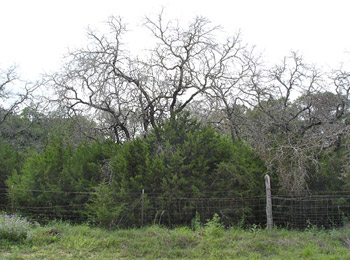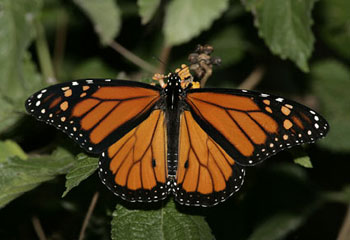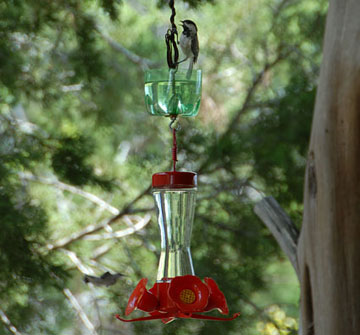January 04 2007
1.9 inches of rain!
Worked with drainage for erosion control along gravel road and throughout.
Posted in 2007 Journal, Erosion
1.9 inches of rain!
Worked with drainage for erosion control along gravel road and throughout.
Posted in 2007 Journal, Erosion
Treated 21 oaks with fungicide for Oak Wilt.

Caretaker's note: Oak Wilt is a fungal disease that affects Live oaks, Shumard oaks, Red oaks (also called Spanish oaks), Black jack oaks and other members of the Red oak family. Experts have developed this Eight Step Program to correctly identify the problem. The fungus spreads through the root system and can be carried by beetles that are infected with the fungus. Proper pruning and careful wood storage can help prevent the spread of the disease. Oak Wilt, and other tree diseases are another reason to preserve Ashe juniper species in a woodland.
Treatment was provided by Paula Johnson's company Oak Wilt Specialists of Texas.
Posted in 2007 Journal, Habitat
Planted:

Caretaker's note: This Monarch butterfly was flying south to its wintering grounds in
Mexico. They cannot survive freezing temperatures and in the fall
travel in large groups to warm winter climates. The
Oak Wilt scare on southeast corner of property. Texas Forest Service will visit for identification.
Posted in 2006 Journal, Census, Habitat
Planted new plants from Lady Bird Johnson Wildflower Fall plant sale:
Other activities:
Posted in 2006 Journal, Habitat
Rain! Finally, 1 inch or more, a good slow soaking. Birds very active in drizzle after rain.
Planted Buffalo Grass and watersto_jennystone mix around edges of roads near house
Many hummingbirds (20 or more) - Ruby Throated, Black Chinned, Rufous. Continued to feed hummingbirds and keep ant guards full. Yellow jacket wasps visiting hummingbird feeders, but harassing hummingbirds. Put up wasp trap.

Caretaker's note: The cup of water hung above the feeder keeps ants out of the hummingbird food. The water guards also provide another drinking place for thirsty birds in the drought.
The hummingbird feeding mixture is 4 parts water to 1 part plain white sugar. Do not cook to dissolve, just stir very well and keep refrigerated. It is not necessary to add red dye to the feeding mixture because the red color on the feeder will attract the hummingbirds.
Observations:
Caretaker's note: Continued feeding stations. Animals benefit from supplemental feeding, black oil sunflower seeds are a favorite for many species. Using 900 pounds a week
Posted in 2006 Journal, Census, Habitat, Food, Water
web application - database development by davidcdalton.com
New Site